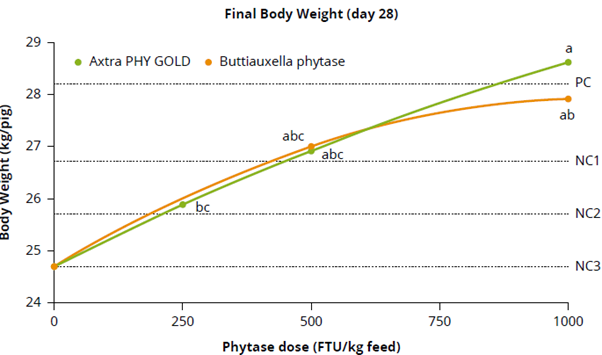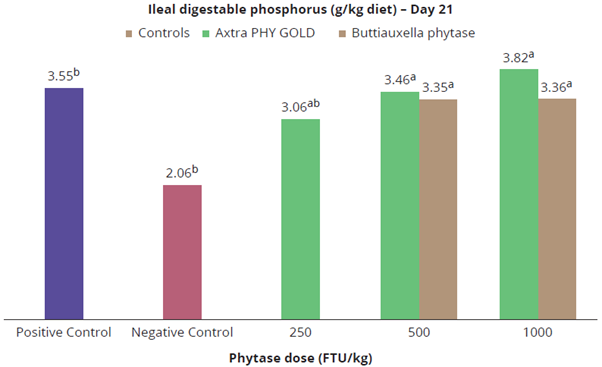Unveiling the impact of new phytase sources on animal nutrition
The utilization of phytase enzymes to unlock vegetal phosphorus has been a longstanding practice in animal nutrition. Over the years, advancements in enzyme technology have led to the introduction of new generations of phytase enzymes. In this article, we explore the question: Do new phytase sources still make a difference?
Improved Phytase Efficacy:
The latest generation of phytase enzymes represents a significant leap forward from their predecessors. One crucial aspect is their enhanced efficacy, particularly in the low-pH environment of the stomach. The current t generation standard is a Buttiauxella phytase which acts twice as fast as its direct competitors, initiating phytate hydrolysis in the early stages of digestion. The new generation phytase continued to improve temperature resistance, pH-dependent activity, and affinity for rapidly degrading phytate. This sets the new generation phytase further apart from their predecessors, especially at higher inclusion levels.
Releasing Vegetal Phosphorus:
Phosphorus plays a vital role in the diet of monogastric animals, supporting growth, bone development, and nerve functioning. Traditional feed formulations include safety margins to prevent deficiencies, leading to higher feed costs and increased phosphorus excretion. The new generation of phytase enzymes challenges this norm by demonstrating that even during the critical starter period of broiler rearing, inorganic phosphate additions can be eliminated. Data indicates that feeding without monocalcium phosphate (MCP) and maximizing phytase usage improves body weight gain, feed conversion rate, and bone breaking strength. The science behind this lies in the higher levels of ileal digestible phosphorus offered by the new generation enzymes compared to their predecessors.

Figure 1: Effects of increasing phytase doses from 0 - 1,000 FTU/kg on the final body weight of piglets.
Making a Difference:
In response to the question of whether the new generation of phytase makes a difference, the answer is a resounding yes. The key characteristics that made the current generation effective have been refined and improved. The collective impact of enhanced efficacy, heat stability, and activity at low pH ranges contributes to a more attractive matrix for digestible phosphorus, digestible calcium, energy, digestible protein, and all 21 amino acids. Moreover, these advancements pave the way for more sustainable feed formulations, offering the potential to completely replace inorganic phosphorus.

Figure 2: Effect of increasing phytase doses from 250-1,000 FTU/kg on ileal digestible phosphorus in young broilers.
Questions or want more information? Contact Eric van der Wijst!
